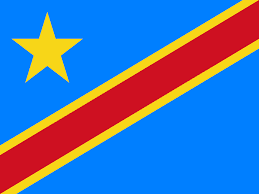"고려의 중심 | The Heart of Koryo"
About:
Kaesong, a city in North Korea, was founded in 918 during the Goryeo Dynasty, serving as the capital from 918 to 1392. Its significance as a political and economic hub led to the establishment of the Songgyungwan, a Confucian academy. During the Korean War, Kaesong was the site of several major conflicts. Post-war, it hosted the Kaesong Industrial Region, a joint North-South economic project. Despite political tensions, the city remains an important cultural and historical site, with several UNESCO World Heritage sites.
When to visit:
Kaesong, located in North Korea, experiences four distinct seasons throughout the year. The best time to visit Kaesong on a holiday is during the spring season, from April to June, when the weather is mild and the city is adorned with colorful cherry blossoms. During this time, you can also witness traditional ceremonies and events that showcase the cultural heritage of Kaesong. Summer can be hot and humid, while autumn offers pleasant temperatures and beautiful fall foliage. Winter is cold and snowy, making it a less popular time for tourism in this region.
When to avoid:
Kaesong, a city in North Korea, experiences its coldest and harshest weather during the winter months, making it the least favorable time to travel for a holiday. The winter season, spanning from December to February, is characterized by freezing temperatures and heavy snowfall, which can disrupt travel plans and limit outdoor activities. Additionally, many tourist attractions and local businesses may have reduced operating hours or be closed altogether during this time. Travelers are advised to plan their trips to Kaesong during the more temperate seasons of spring and autumn to fully enjoy the city's historical sites and cultural offerings.
Winter (Dec-Feb)
In Kaesong, North Korea, the coldest part of the year is from November to early March, with temperatures often dropping below freezing. The city experiences an average of 20-30mm of rainfall, with snowfall occurring during the colder months. The days are typically short with about 5-6 hours of sunlight, and the sky is often overcast. For a visitor, an average day might involve bundling up against the chill, navigating icy streets, and enjoying the quiet beauty of the snow-covered city. The wettest part of the year is from July to August during the monsoon season, with heavy rainfall and high humidity.
Summer (June-August)
In Kaesong, North Korea, the warmest part of the year typically spans from June to August, marking the summer season. During this period, average high temperatures range from 28°C (82°F) to 30°C (86°F), while the average low temperatures hover around 20°C (68°F).
Rainfall is significant in these months, with July being the wettest month of the year, receiving an average rainfall of about 395 mm. This is due to the East Asian Monsoon affecting the region. Therefore, visitors can expect frequent rain showers and thunderstorms, especially in the afternoons and evenings.
Sunlight varies, with June having the longest days, averaging around 14 to 15 hours of daylight. However, the cloudiness also increases due to the monsoon, often leading to overcast or mostly cloudy conditions.
Humidity levels are relatively high during the summer months, often exceeding 80%, which can make the heat feel more intense and may lead to a muggy and uncomfortable atmosphere.
A typical day for a visitor during this period would start with warm and sunny mornings, followed by cloudy afternoons with potential rain showers or thunderstorms. Despite the rain, the temperatures remain warm throughout the day and night. The high humidity could make outdoor activities a bit strenuous, so it's advisable to stay hydrated and take frequent breaks.
Language:
In Kaesong, the most commonly spoken language is Korean, specifically the North Korean dialect. This dialect is somewhat different from the South Korean dialect, but both are mutually intelligible. Due to the city's historical significance and its location near the border with South Korea, some South Korean influence on the local dialect can be observed.




